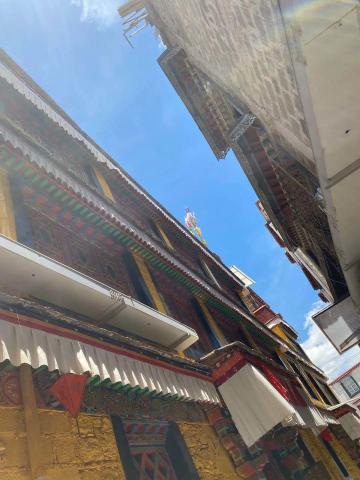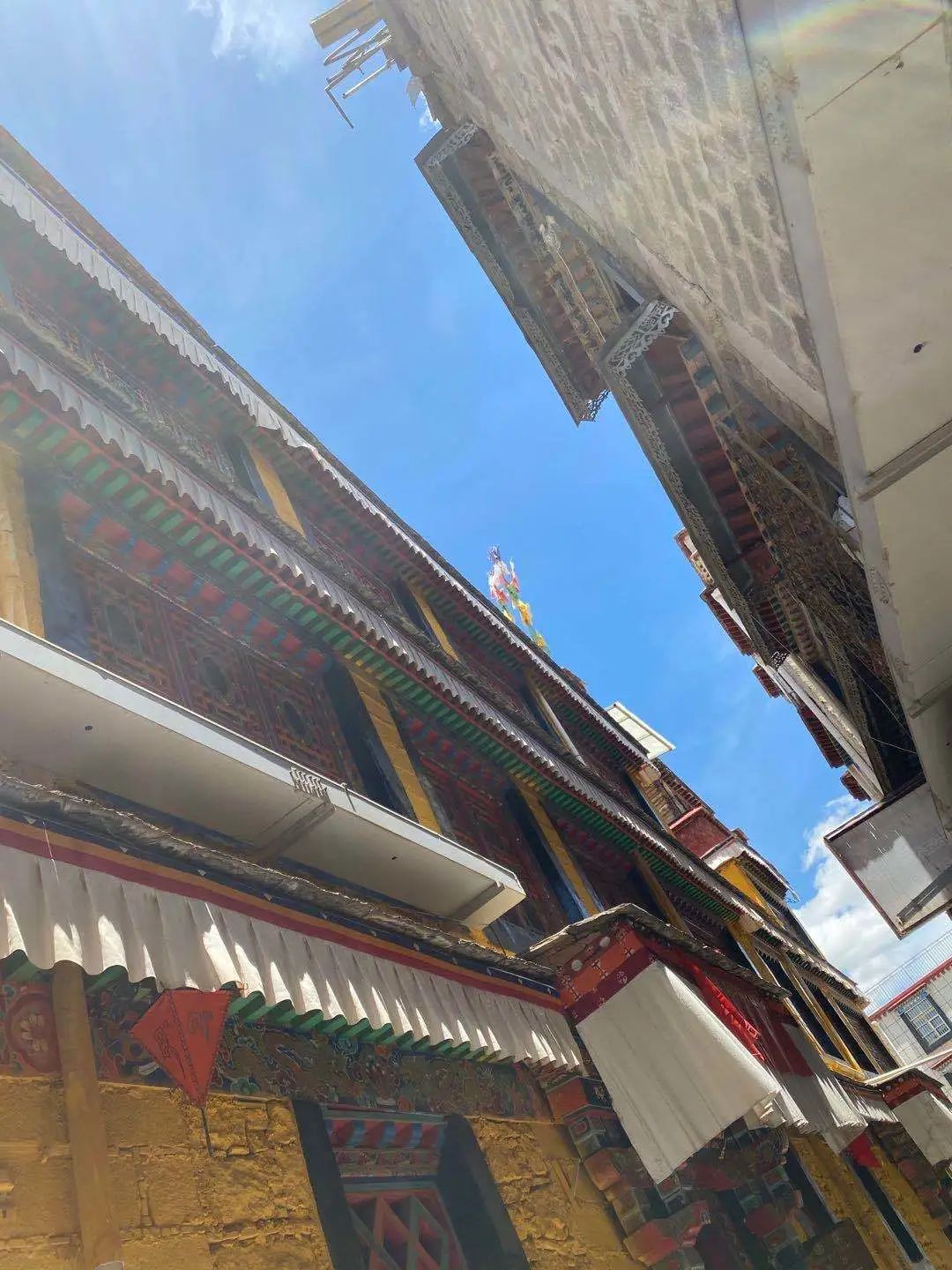

Encountering Tibet (Part 6)
The flower of etiquette reflects the deep cultural psychology of a nation and blooms with a strong national emotion. Etiquette and etiquette for various occasions display the excellent traditions inherited by a nation from generation to generation.
Hada, which is the transliteration of Tibetan, is a kind of "gift scarf". It is a long silk scarf, a kind of raw silk fabric, spun as loosely as a net, and silk is also used. There are many researches on the origin of Hada, but it is generally believed that Hada was introduced to the Mongolian grasslands after it was introduced to Tibet in the Yuan Dynasty. The ancient Tibetan Dharma king Pasiba met with Kublai Khan, the founder of the Yuan Dynasty, and brought it back to Tibet. At that time, the silk had the pattern of the Great Wall and the words "good luck and good fortune". Among the people, Hada is also said to be the fairy's ribbon, and its whiteness symbolizes holiness and supremacy.
According to relevant information, the Tibetan word "ha" means "mouth", and "da" means "horse". The two words "hada" are literally translated as: a horse in the mouth, which means that this kind of gift is quite to the value of a horse. Because when people meet, they can’t just bring horses anywhere, but they can’t just use their mouths to replace a horse with this silk “hada”.
Hada is mostly white. Since ancient times, ethnic minorities such as Tibetans and Mongolians have believed that white symbolizes purity, beauty, auspiciousness, and kindness, and people cherish the color white.
Hada also comes in blue. In the Inner Mongolia prairie, people admire blue very much because blue is the color of the sky. This color is also called cyan, and is called "Hohhot" in Mongolian. It is often used in names of people and places. "Hohhot" means Qingcheng. Blue symbolizes eternity, prosperity, steadfastness and loyalty in the grassland. Herdsmen especially like to wear blue robes, and most of the decorative patterns in their daily lives are blue.
In addition, there are colorful hadas, the colors are blue, white, yellow, green and red. Blue represents the blue sky, white represents the white clouds, green represents the river water, red represents the space protector, and yellow symbolizes the earth. It is said that colorful hada is the most precious gift and is only used under certain circumstances.
In Tibetan areas, offering hada is a common and noble etiquette. It is customary to offer hada during ceremonial activities such as weddings and funerals, welcomes and farewells, pilgrimages to Buddha statues, visits to elders, and farewell to long journeys.
Offering hada means to express purity, sincerity, loyalty, respect, welcome and blessing to the other party. It is an expression of civilization and courtesy, so it is very particular. When presenting a hada as a tribute, the fold should face the distinguished guest and be handed to the palm of the other person's hand. When greeting each other, when the younger generation presents a khata to their elders, the lower part of the khata should be folded outward.
There are also certain rules and forms for presenting hada: according to the established rules, offerings should be made to those above and given to those below. The same is true between seniors, peers and juniors. Those who offer hada should bow their heads and offer their hands to show respect. The person being offered must also bow down and receive it with both hands to show reciprocity. Of course, it means different things in different situations. Only by correctly accepting the relevant etiquette can you truly appreciate its cultural heritage.

